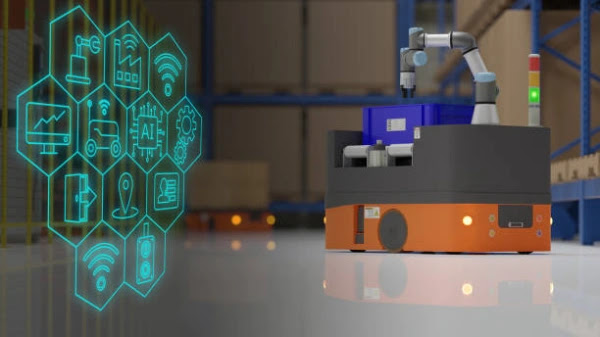Featured
- Get link
- X
- Other Apps
Smart factories

Introduction
In recent years, the manufacturing industry has witnessed a
significant shift towards automation and digitalization, leading to the
emergence of smart factories. These advanced manufacturing facilities leverage
cutting-edge technologies such as the Internet of Things (IoT), artificial
intelligence (AI), robotics, and data analytics to create a connected and
intelligent production environment. This article explores the concept of smart
factories, their key components, benefits, implementation challenges, and their
transformative impact on the manufacturing landscape.
I. Understanding Smart Factories
Intelligent plants, also known as Industry 4.0 or the Fourth
Industrial Revolution, represent the next phase of manufacturing evolution.
They are characterized by integrating advanced technologies to create highly
automated, data-driven, and interconnected production systems. Smart factories
leverage IoT devices, sensors, data analytics, and AI algorithms to optimize
efficiency, increase flexibility, and enhance productivity.
II. Key Components of Smart Factories
Internet of Things (IoT): Smart factories rely on IoT
devices to connect various assets, machines, and systems within the manufacturing
environment. These devices collect real-time data, enabling remote monitoring,
predictive maintenance, and enhanced process control.
Data Analytics and Artificial Intelligence: Smart factories
leverage data analytics and AI algorithms to extract valuable insights from the
vast amount of data generated during production. Predictive analytics, machine
learning, and cognitive computing enable intelligent decision-making, quality
control, and optimization of production operations.
Robotics and Automation: Robotics plays a crucial role in
smart factories, automating repetitive tasks, improving precision, and enabling
human-robot collaboration. Robotic systems enhance efficiency, reduce errors,
and increase production capacity.
Cybersecurity: With increased connectivity comes the need
for robust cybersecurity measures. Smart factories implement cybersecurity
protocols to safeguard sensitive data, protect against cyber threats, and
ensure the integrity of production systems.
III. Benefits of Smart Factories
Improved Efficiency and Productivity: Smart factories
optimize production processes through real-time monitoring, predictive
maintenance, and intelligent resource allocation. This leads to increased
operational competence, reduced downtime, and enhanced productivity.
Enhanced Quality Control: Integrating data analytics and AI
algorithms enables real-time quality monitoring and control. Smart factories
can identify anomalies, detect defects, and make adjustments to ensure
consistent product quality.
Agile and Flexible Manufacturing: Smart factories embrace
flexibility, allowing rapid customization, shorter production cycles, and easy
reconfiguration. This agility enables manufacturers to respond quickly to changing
market demands and customer preferences.
Cost Reduction and Resource Optimization: By leveraging data
analytics and AI algorithms, smart factories optimize resource usage, minimize
waste, and identify cost-saving opportunities. This leads to reduced production
costs, energy consumption, and environmental impact.
IV. Implementation Challenges
Technology Integration and Legacy Systems: Implementing
smart factories requires integrating new technologies with existing systems and
equipment. Legacy systems may lack compatibility, requiring careful planning
and investment in infrastructure upgrades.
Workforce Skills and Training: The transition to smart
factories demands a skilled workforce capable of operating and maintaining
advanced technologies. Providing employees with adequate training and
upskilling opportunities is essential to maximize the benefits of intelligent
factory implementation.
Data Security and Privacy: Smart factories generate vast
amounts of data, making data security and privacy critical. Robust
cybersecurity measures and acquiescence to data protection regulations are essential
to maintain the integrity and confidentiality of sensitive information.
Return on Investment (ROI): The initial investment required
for intelligent factory implementation can be significant. Manufacturers must
carefully evaluate the ROI, considering technology costs, implementation timelines, and potential long-term benefits.
Conclusion
Smart factories represent a significant leap forward in the manufacturing industry, enabling greater efficiency, productivity, and flexibility. Manufacturers can transform their production processes and stay competitive in a rapidly evolving market by harnessing the power of IoT, data analytics, AI, and automation. While challenges exist regarding technology integration, workforce readiness, and cybersecurity, the benefits of intelligent factories far outweigh these hurdles. As manufacturing continues to embrace digitalization, smart factories will play a vital role in driving innovation, optimizing operations, and reshaping the future of manufacturing. With suitable approaches and investments, businesses can position themselves at the forefront of this technological revolution, unlocking new levels of efficiency, profitability, and sustainable growth.
- Get link
- X
- Other Apps

